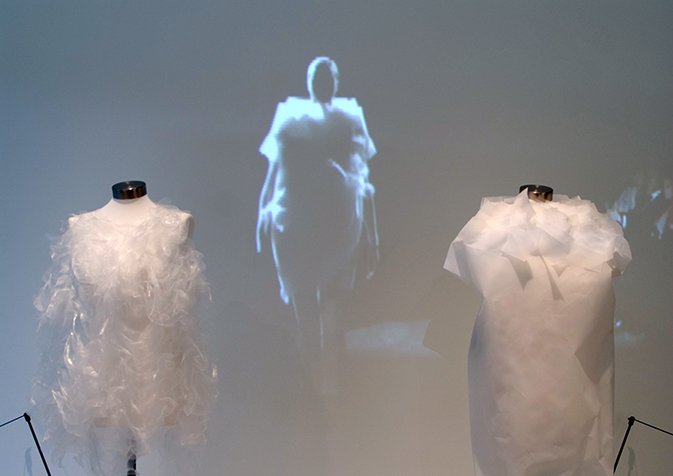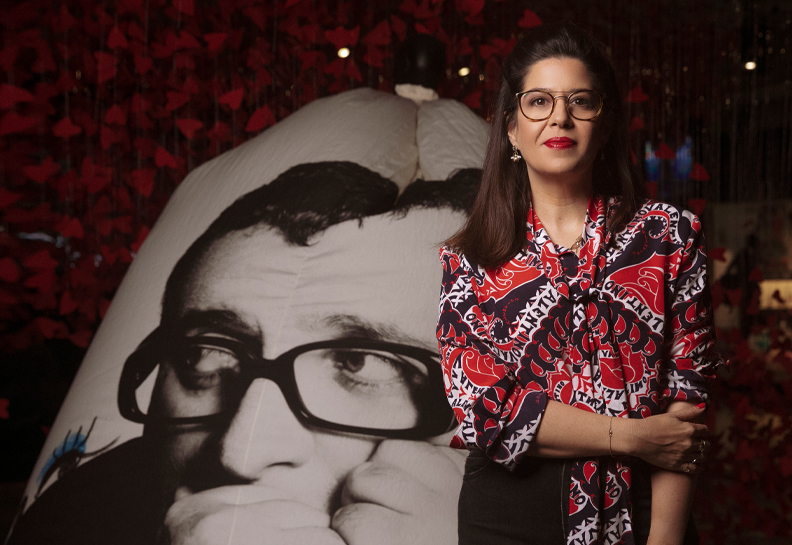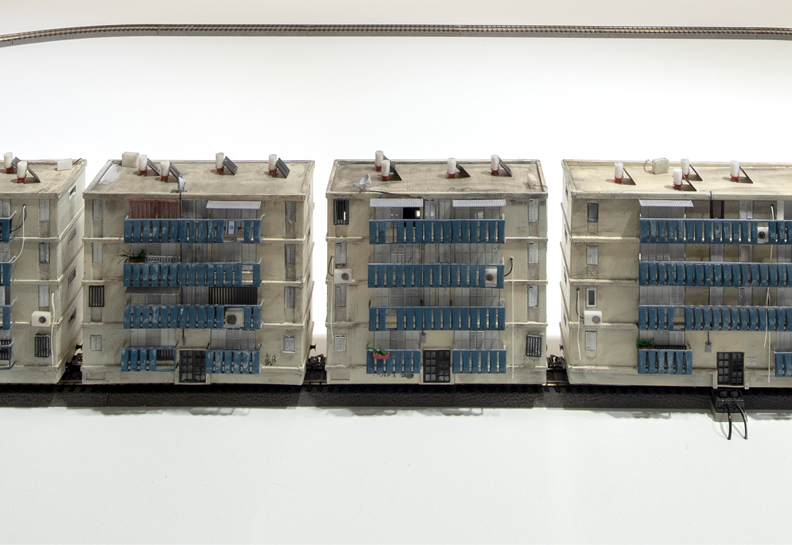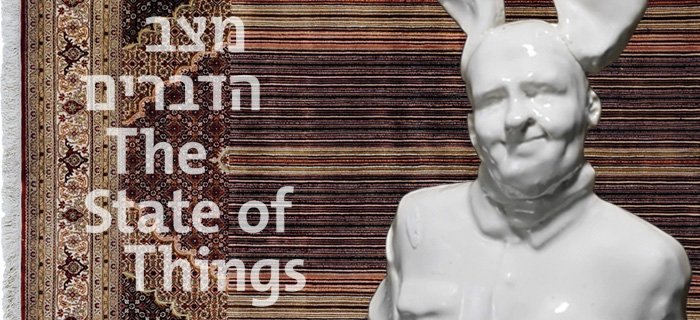The exhibition currently on display the Museum, deals with the interrelationship between couture and machines. Such are the garments designed by Ying Gao, which are on display.
Mechanical Couture – Fashioning a New Order, deals with the interrelationship between couture and machines. The combination of these two words will generally bring to mind instant images of the huge factories evoked by the triple-word phrase “Made in China”; three words that are usually received with disdain and indignation about inferior quality, harsh working conditions, mass production, and the absence of originality. But once in a while, this combination produces different and wondrous things; garments that could not have been produced other than by means of this combination of machines and couture. Such are the garments designed by Ying Gao, which are on display in the exhibition.I met Ying Gao, whose garments take up about half the space of the Museum’s Lower Gallery, for coffee at the Museum two days before the opening of the exhibition. She was born in Beijing in 1974, her father was a diplomat, and she lived in various countries around the world. She studied fashion design in Geneva and Montreal. After working for a while in the fashion industry, she realized that this was not where she belonged, and decided to continue her studies. She was awarded her MA in Interactive Media from Université du Québec à Montréal, where she is currently a professor at the Graduate School of Fashion Design. A surprising shift, one might think, but according to Gao, there was nothing more natural for her. “I have always had a tendency for media,” she states modestly.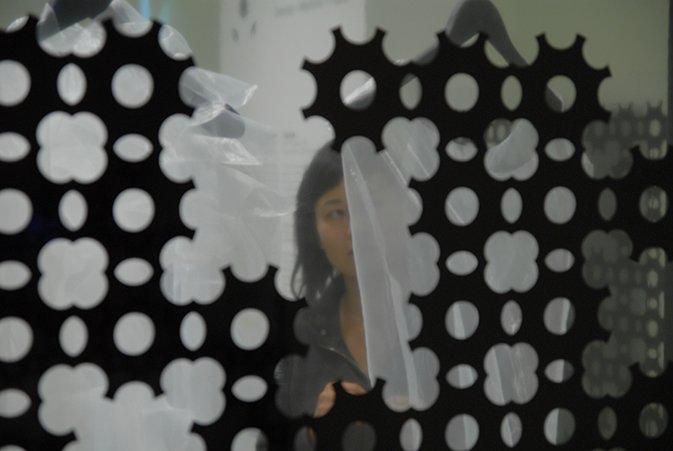
The distinctive garments you are displaying in the exhibition combine technology and fashion. Mechanisms and sensors that respond to motion, air and light in dresses with flower appliqués and pleating. There can be no doubt that the technological aspect is very important in your work, but you do not neglect the garment’s stylishness either. What inspires you to begin working on a new garment, technology or fashion?”Cinema is a total experience in every respect; it is a collection of small experiences concentrated into a whole creation that affects most of our senses. This is my attitude to the garments I create. As a whole experience, and as such it is difficult for me to separate technology from fashion, two aspects that are ingrained in me and my work. I find it boring to create something that is solely technology, and I find it boring to create something that is solely fashion, but the combination between them is what arouses my interest and inspires me to create.”You say that in the creation of your technological garments you were influenced by Jacques Tati’s film, Playtime; are there specific scenes that influenced you?”Yes. There’s one scene in the film in which Jacques Tati crashes through a plate-glass window that disintegrates and shatters into smithereens. This scene inspired me to create the airy dress made of super-organza. The translucent, shimmering fabric, and working on the garment form with origami folds, all create an effect that reminds me of that shattering glass. There’s another scene in the film in which you see the window of a modern apartment, which is very stylishly designed, and the apartment’s window looks like a store display window, and the protagonist looks into the apartment-store from the street. This scene was the inspiration for my design of the dress with the inner light.”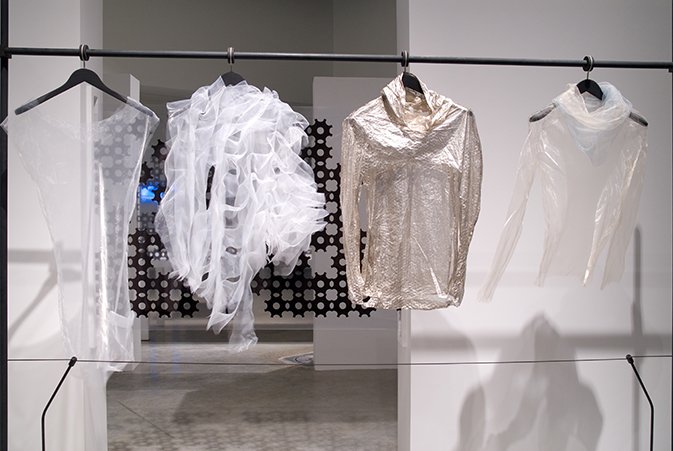
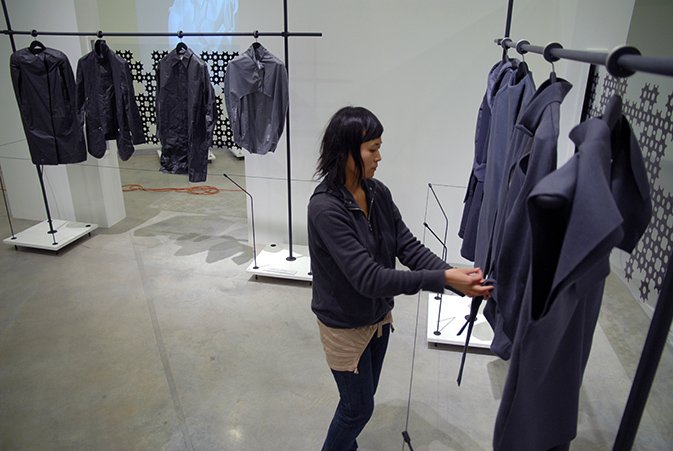
What kind of materials would you like to work with in the future?”Water. The inspiration I draw from nature and basic natural elements is very powerful. I believe we shouldn’t go looking for new materials and challenges if we haven’t yet exhausted the ones we have. And as far as I’m concerned, water is the next challenge; to try and work with organic materials in their most natural and pure state. As opposed to working with organic cotton, which is actually not entirely organic since it undergoes enhancement processes, washing, weaving, and so forth, I’d like to handle materials that come directly from nature, and that leaves me with air, light, and water. So, until I find a material that’s sufficiently light to continue my helium project, I’ll try to work with the other two.”And what next, for the next ten years?”I’d like to go on teaching. I love seeing the students’ eyes and their looks. I love seeing their desire to learn and I love the interaction with them. I often feel fortunate to be teaching, and I feel that I have the privilege of learning from them too,” says Gao, and goes on to conclude, “In order to create and innovate you need unending curiosity, always strive to know more, investigate more, and experience and experiment with as much as possible, take nothing for granted, and be as bold and daring as you possibly can.”
Gao’s works, Living Pod, Walking City, and part of the Post-Vernissage collection she created with Karl Latraverse, can bee seen at Design Museum Holon until January 8, 2011
